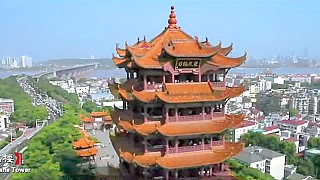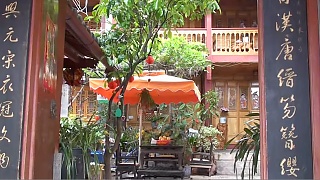
|
With WestChinaGo ...
With BeijingBuzzz ...
With Ross ...
With China Walking Tour ...
With Chris ...
Summer Palace Visitor Guide - BeiJing
Overview
The Summer Palace, located in the HaiDian district of Beijing, is a vast ensemble of lakes, gardens, and palaces. It served as a royal garden and retreat for the Qing Dynasty emperors and is now a UNESCO World Heritage Site.
Getting There
Location: 19 XinJianGongMen Road, HaiDian District, Beijing, China.
Public Transport:
Subway: Line 4, Beigongmen Station (North Palace Gate), Exit D. Alternatively, Line 10, Xiyuan Station, Exit C2.
Bus: Several bus lines stop near the Summer Palace, including routes 303, 330, 331, 332, 346, 508, 579, and 584.
Opening Hours
April 1 to October 31: 6:30 AM to 6:00 PM (ticket sales and last entry at 4:00 PM)
November 1 to March 31: 7:00 AM to 5:00 PM (ticket sales and last entry at 3:00 PM)
Tickets
April 1 to October 31: Entrance Fee: ¥30, Through Ticket (includes Dehe Garden, Tower of Buddhist Incense, Suzhou Street, and Wenchang Hall): ¥60
November 1 to March 31: Entrance Fee: ¥20, Through Ticket: ¥50
Main Attractions
The Summer Palace is rich with historical and cultural sites. Here are some of the main attractions:
Kunming Lake: This large lake dominates the Summer Palace and is ideal for boating. It covers about three-quarters of the park's area.
Longevity Hill: Standing 60 meters high, it provides excellent views of the lake and surrounding area. Important buildings such as the Tower of Buddhist Incense are located here.
Seventeen-Arch Bridge: A long, beautiful bridge that connects the eastern shore of Kunming Lake to Nanhu Island.
Long Corridor: A 728-meter-long covered walkway decorated with intricate paintings, connecting the Hall of Dispelling Clouds to the Marble Boat.
Marble Boat: A lakeside pavilion built from marble and wood, symbolizing stability and the enduring nature of the Qing Dynasty.
Hall of Benevolence and Longevity: The administrative center of the Summer Palace, where Empress Dowager Cixi handled state affairs.
Suzhou Street: A charming area designed to resemble the canals and traditional shops of Suzhou, complete with waterways and bridges.
Activities
Visitors to the Summer Palace can engage in various activities:
Boating: Rent a paddleboat or take a dragon boat tour on Kunming Lake.
Walking and Hiking: Stroll along the scenic paths, the Long Corridor, or hike up Longevity Hill for panoramic views.
Photography: Capture the stunning architecture, landscapes, and historical sites.
Guided Tours: Join a guided tour to learn more about the history and significance of the Summer Palace.
Dining and Refreshments
Several cafes and snack stalls are available within the Summer Palace, offering light refreshments, drinks, and local snacks. For a more substantial meal, visitors can dine at restaurants near the park entrances.
Visitor Tips
Best Time to Visit: Spring and autumn are the best times to visit due to the pleasant weather. Summer can be very hot, and winter can be quite cold.
Wear Comfortable Shoes: The Summer Palace is vast, and exploring it involves a lot of walking.
Stay Hydrated: Bring water, especially during the hotter months.
Respect the Site: The Summer Palace is a cultural heritage site. Avoid touching artifacts, stay on marked paths, and do not litter.
Plan Your Visit: Due to its size, plan which sections you want to visit in advance to make the most of your time.
Nearby Attractions
Old Summer Palace (Yuanmingyuan): Located nearby, this former imperial garden offers ruins and beautiful landscapes to explore.
Beijing University: One of China’s most prestigious universities, known for its beautiful campus and Weiming Lake.
Tsinghua University: Another top university in China, with an expansive and scenic campus.
Conclusion
The Summer Palace in Beijing is a magnificent site rich in history, culture, and natural beauty. Whether you're interested in Chinese history, stunning architecture, or beautiful landscapes, the Summer Palace offers a memorable and enriching experience.
|
 Photographic posing accents – documentary video
Photographic posing accents – documentary video



